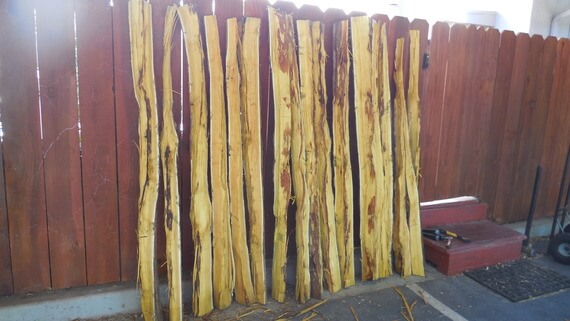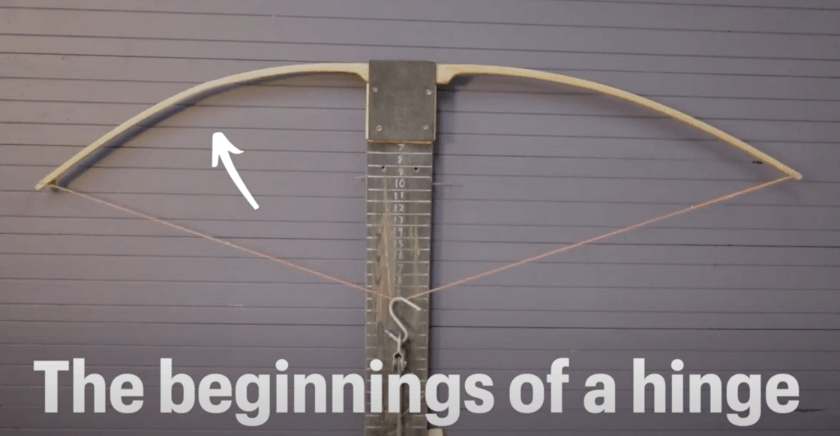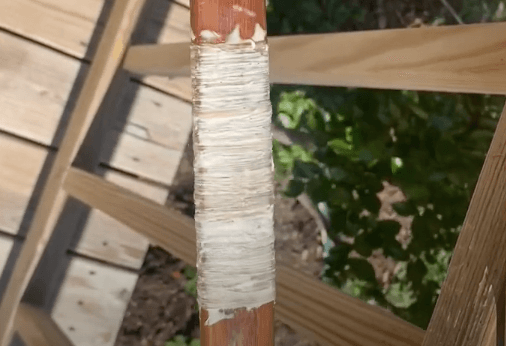Making your own Self-Bow can be an extremely rewarding experience. Seeing how the bow comes to life throughout the entire process can be considered almost cathartic. But a week into testing your new bow, the unthinkable happens. You pull back on the string and suddenly hear a loud splintering crack, and you suddenly have two bows instead of one. So why does it happen? And more importantly, how can you prevent a Self-Bow from breaking?
In general, selecting the right kind of wood for your Self Bow is the number one way to prevent your Self Bow from breaking. Selecting a clean stave without any imperfections or run-offs will give you the best possible start to your build. A quality wood like Hickory will also give you a wider margin of error as it can take more stress than less dense woods.
Let’s look at how you can go about insuring your Self-Bows from breaking. With a little forethought and some insight, there’s a surprising number of things you can do to help avoid heartache.
How Do You Prevent A Self-Bow From Breaking?
Wood Selection
Avoid pine, cedar, poplar or other low-density woods otherwise, you will need to lower the draw weight, as well as widen or lengthen the bow.

If you choose a less-dense piece of wood, you’ll find that there is less ‘wood in the wood’, so you will have to compensate somehow. Experienced Bowyers can sometimes get around this by changing the design of the bow.
Starting off with a better piece of wood like yew, hickory, oak, ash or elm will give the beginner Bowyer a much bigger margin of error as they can take a lot of Set before they finally break.
You’ll need a clean strip of straight fibres from one end of the stave to the other without any corruptions, knots, violations or fibres running off the sides.
If the stave has fibres that run off in the middle, when you pull on the bow, those fibres might lift up and form a splinter.
Margin of Error
As things never go according to plan, you need to give yourself enough wiggle room to account for the mistakes you’re going to make.
Longer or wider bow – longer bows have the advantage of being much easier to till than shorter bows. Plus you get more wood to fine-tune your carving skills.
Dropping the draw length and lowering the draw weight are also ways to increase your margin of error.
Until you have more experience, avoid complex designs like recurve and reflex bows. Shorter bows require a little more skill, so spend time developing your craft before moving on to the more unforgiving designs.
The Tiller
The goal of tillering is to evenly distribute the bending so that no one part of the bow is overworked. If the bow has been designed well, you should be able to pull each portion of the bow as far as you can without seeing any hinging or Set.

Two aspects to good tillering in order to prevent a self bow from breaking:
- The tiller shape of your bow matches the profiles of your bow
- The bend of the bow is smooth without any obvious hinges
If you’re having tiller issues then you could post a tiller profile on an online forum. Just make sure you post a side profile, a front profile and a picture at full draw. You should be able to get lots of help from more experienced bow makers.
Set
Think of Set as pulling back on a rubber band too far so that it won’t snap back to its original shape.
Set is when you over-stress the wood and exceed the material’s elastic limit. Well before your bow reaches breaking point, it will reach Set. If you ignore Set, your bow might break before you even realise it.
A little bit of Set is ok, but too much could mean you have a problem with your wood selection, design or tillering.
Set is a sign that your wood is over-stressed and that you should consider lowering your target draw weight or draw length. Other choices might include lengthening or widening the bow.
Set means that the wood fibres have been crushed on a microscopic level, which unfortunately is permanent. So the best ways to avoid Set are through good design and tiller.
Poor Bow Backings
Trying to produce a bow without sufficient backing for that specific bow will inevitably lead to a break.
A bow backing applied to a 30lb bow may not be sufficient enough for a 60lb bow, so having the right type of backing for the specific draw weight you’re trying to build is a crucial step in avoiding a break.
Performance Greed
When it comes to bow-making, it’s easy to bite off more than you can chew. You may be tempted to make a reflex or recurve bow because you know that they can shoot further and faster, which may be true if you can nail the design. But if you don’t quite have the experience, you stand a better chance at making a better-performing bow with a simple straight stave design.
With your first bow, you should invest the time into learning the fundamentals of bow-making rather than trying to troubleshoot more advanced issues that can occur while making recurve bows.
Once you’re confident in tillering straight stave bows for low Set, then you should be ready to increase the amount of stress on the wood like on a reflex or recurve bow.
Note that anytime you add a performance feature, this will likely add more stress to the wood. You can counterbalance that stress by adding more margin of error through wider and longer bending limbs.
Exercising The Bow Limbs
Wood has memory. If you’re removing wood to fine-tune the bow, the wood will remember the last time that you bent it, but not in mind the wood that you just removed.
To get the wood into its newest form, you’ll need to exercise the bow limbs. This involves stressing the wood to the appropriate poundage before taking a new reading.
How Long Does A Self Bow Last?
With minimal maintenance or components to replace, a Self bow will last as long as your body is capable of drawing the bow.
As long as you properly maintain your bow, you could easily still be shooting with it in 20 or even 30 years’ time.
Can You Repair A Broken Self-Bow Limb?
If the split is relatively superficial, such as a stress fracture, and runs in line with the grain, you should be able to patch it over using a combination of glue, sinew and thread.

Another approach is to use animal hide as it has more stretch to it. Cracks that run the entire length of the bow, however, may require you to cut out whole sections of the bow to resolve the issue.
Remember to adjust the balance of the limbs if you do remove any wood from one side. You will have to remove the same amount from the other limb to avoid any potential hinging.
You will also need to lower the draw weight of the bow.
Conclusion
Prevention is always better than cure. This absolutely applies to bow-making. Nailing your design and the quality of your wood, plus good tillering practices, you should be able to prevent a self-bow from breaking.
If you do happen to get any kind of fracturing, rest assured that you patch them up depending on the severity.
Even though in this article we looked at best practices on how to avoid breaking a Self-Bow, breaking bows is always going to be part of the Bowyer’s journey. Think of it this way, the only way you’re going to learn how not to break a bow is by breaking a bow!

0 Comments